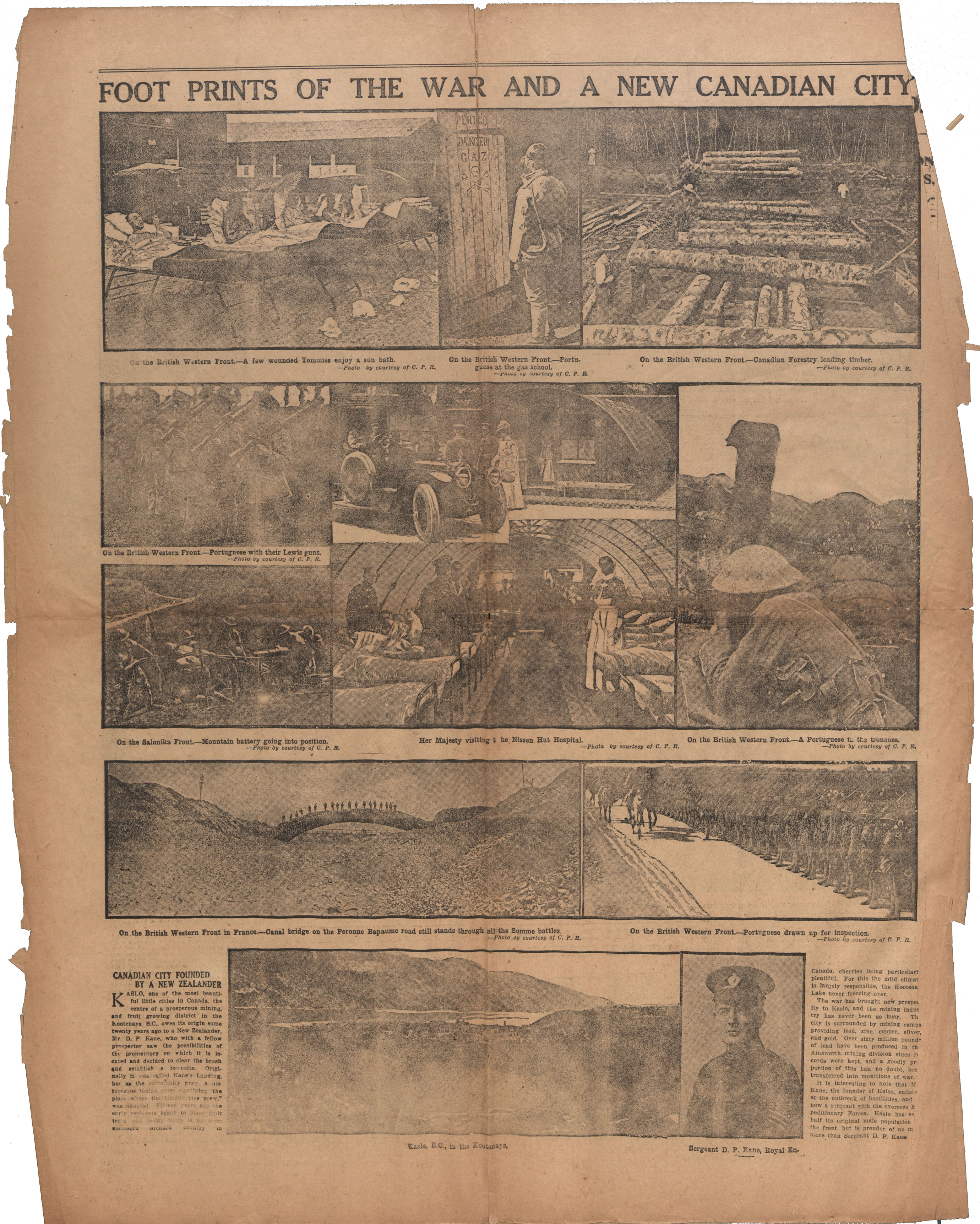Nova Scotia Archives
Archibald MacMechan
Halifax Disaster Record Office Materials
The Halifax Herald
10 December 1917. — 4 pages : 30 x 38 cm.
note: transcription publicly contributed - please contact us with comments, errors or omisions
FOOT PRINTS OF THE WAR AND A NEW CANADIAN CITY
On the British Western Front - A few wounded Tommies enjoy a sun bath.
- Photo by courtesy of C. P. R.
On the British Western Front. - Portuguese at the gas school.
- Photo by courtesy of C. P. R.
On the British Western Front. - Canadian Forestry loading timber.
- Photo by courtesy of C. P. R.
On the British Western Front. - Portuguese with their Lewis guns.
- Photo by courtesy of C. P. R.
On the Salonika Front. - Mountain battery going into position.
- Photo by courtesy of C. P. R.
Her Majesty visiting t he Nissen Hut Hospital.
- Photo by courtesy of C. P. R.
On the British Western Front. A Portuguese in the trenches.
- Photo by courtesy of C. P. R.
On the British Western Front in France. - Canal bridge on the Peronne Bapaume road still stands through all the Somme battles.
- Photo by courtesy of C. P. R.
On the British Western Front. - Portuguese drawn up for inspection.
- Photo by courtesy of C. P. R.
CANADIAN CITY FOUNDED BY A NEW ZEALANDER
Kaslo, one of the most beautiful little cities in Canada, the centre of a prosperous mining, and fruit growing district in the Kootenays, B.C., owes its origin some twenty years ago to a New Zealander, Mr D. P. Kane, who with a fellow prospector saw the possibilities of the promentory on which it is located and decided to clear the brush and establish a townsite. Originally it was called Kane's Landing, but as the community grew, a picturesque Indian name signifying "the place where the blackberries grew," was adopted. Fifteen years ago the early residents began to plant fruit trees, and to-day there is no more successful orchard country in Canada, cherries being particularly plentiful. For this the mild climat is largely responsible, the Kootena Lake never freezing over.
The war has brought new prosperity to Kaslo, and the mining industry has never been so busy. The city is surrounded by mining camps providing lead, zinc, copper, silver, and gold. Over sixty million pounds of lead have been produced in th Ainsworth mining division since re cords were kept, and a goodly pro- portion of this has, no doubt, been transferred into munitions of war.
It is interesting to note that Mr Kane, the founder of Kalso, enlists at the outbreak of hostilities, and now a sergeant with the overseas E peditionary Forces. Kaslo has se half its original male population the front, but is prouder of no m more than Sergeant D. P. Kane
Kaslo, B.C., in the Kootenays,
Sergeant D. P. Kane, Royal En-
Reference: Archibald MacMechan Nova Scotia Archives MG 1 volume 2124 number 243

